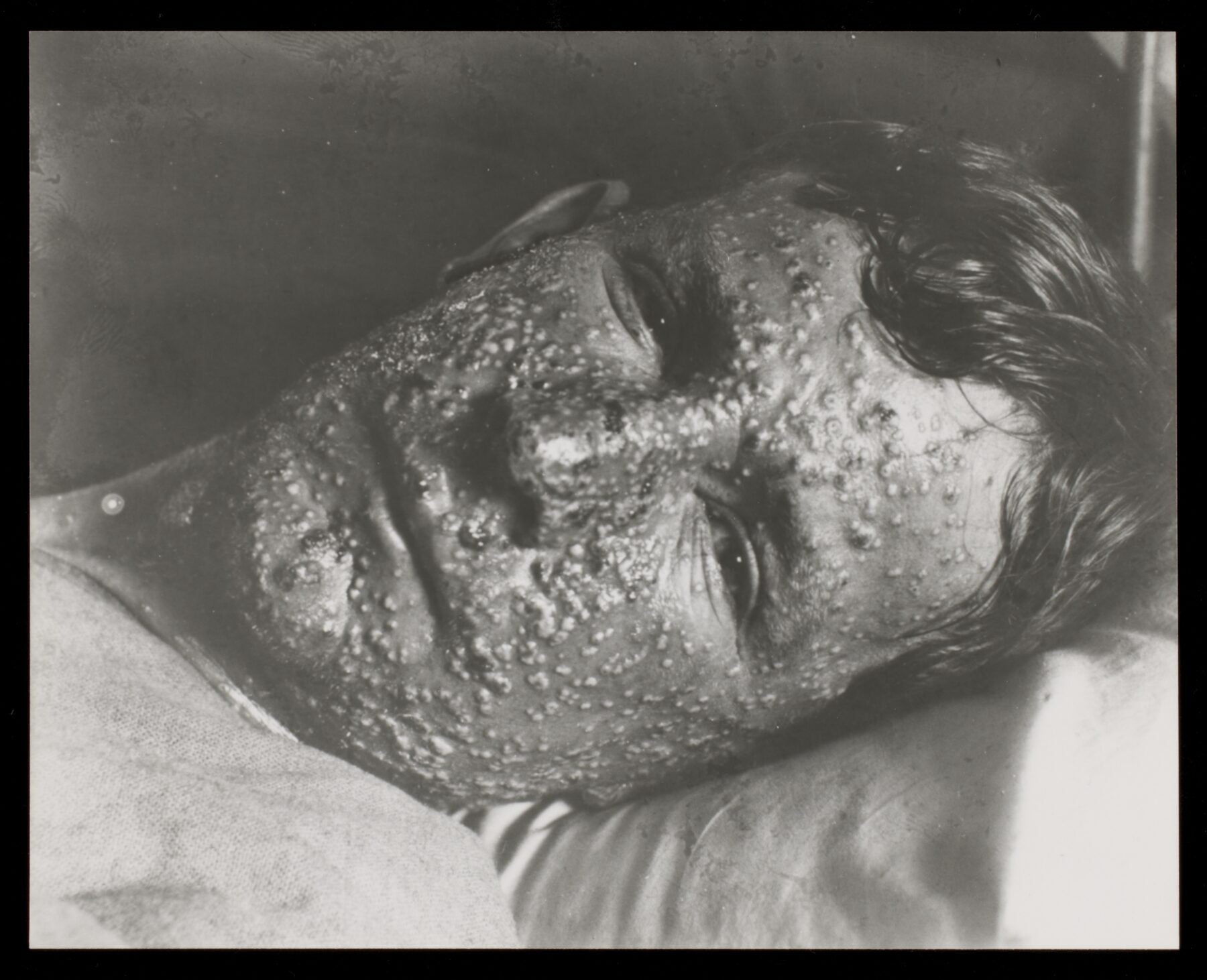Defining Moments in Australian History: smallpox breaks out

In April 1789, 15 months after the First Fleet arrived in Botany Bay, a major smallpox epidemic broke out.
The Europeans who’d arrived in 1788 had some resistance to the disease through earlier exposure, but local Aboriginal people had none and its impact on them was devastating.
Smallpox is one of humanity’s most deadly diseases. Throughout history, it has killed tens of millions and infected hundreds of millions more.
Those who survived were often badly scarred, blinded or both. Symptoms progressed quickly and included fever, headache and backache as well as a severe pustular rash. Death often followed within two days of the onset of symptoms.
The earliest evidence of the virus is in Egyptian mummies dating back to the 3rd century BCE. The first-known written description of the disease appeared in China in the 4th century CE and smallpox arrived in Europe in the 7th century with the Arab advance into Spain and Portugal.
About three in 10 people infected with the smallpox virus, known as variola, died. But the odds were improved dramatically when a technique called variolation was developed in China. This involved deliberately infecting people by blow- ing dried smallpox scabs up their noses. Patients contracted a far milder form of the disease with a mortality rate of only one to two per cent, well below the 30 per cent rate of the full-blown version. Those who survived were then immune.
In 1717 Lady Mary Wortley Montagu, an English aristrocrat, learned of variolation while in Constantinople (now Istanbul). Four years later she was supported by the Princess of Wales in urging for the procedure to be test- ed in England. Prisoners and abandoned children had live smallpox virus, in the form of pus, inserted under their skin. If they survived, they were exposed several months later to the disease, which none of them contracted. Variolation was then used across western Europe.
The 1789 Sydney outbreak did not severely affect the British colonists, most of whom had been exposed to and survived the disease during infancy. As a result, smallpox was not detected until members of the local Aboriginal com- munity were found “laying dead on the beaches and in the caverns of rocks”, wrote Newton Fowell, a First Fleet sailor and avid letter writer.

How were local Indigenous groups infil- trated by smallpox? The early settlers blamed the French. After the British first arrived, French explorer Comte de La Perouse anchored his ships in Botany Bay for six weeks during which at least one of his company died, apparently due to smallpox, and was buried there.
But if the French had been responsible for infecting local Aboriginal people, the outbreak would have started in early 1788, not more than a year later. A more likely source of the disease was ‘variolas matter’ brought by surgeon John White on the First Fleet. This was pus from a recovering smallpox victim sealed in a glass bottle, which White intended to use to variolate children born in the settlement. How this material reached local tribes remains unknown.
Smallpox nevertheless spread across the country, bringing with it shocking death rates. The disease affected entire generations of the Indigenous population and survivors were often left without family or community leaders. Smallpox was followed by influenza, measles, tuberculosis and sexually transmitted diseases, each of which Australia’s Aboriginal people had no resistance to. This cocktail of dis- eases Europeans first brought to Sydney in the late 1700s reduced the Indigenous population by an estimated 65 to 90 per cent during the next century.
A cure for smallpox was never found. But in 1796 English doctor Edward Jenner tested a belief widespread in rural England that milkmaids who’d contracted the relatively mild disease cowpox were immune to smallpox. He proved it was true and used the cowpox virus to create the world’s first vaccine (from vacca, Latin for cow), which has since saved millions of lives.
The last smallpox case in Australia was during World War I. The disease, however, continued to flourish around the world, particularly in poorer countries without access to the vaccine. It was only in 1980 that the World Health Organisation (WHO) declared smallpox eradicated in what is widely regarded as the greatest public health achievement in history. The chairman of the WHO agency responsible for this feat was Australia’s Professor Frank Fenner.
‘Smallpox breaks out’ forms part of the National Museum of Australia’s Defining Moments in Australian History project.

